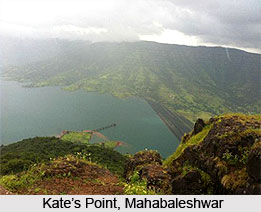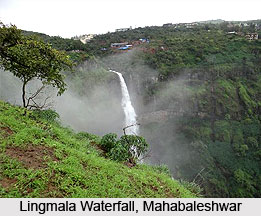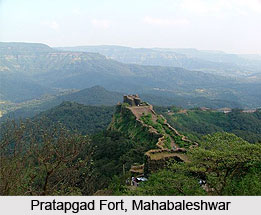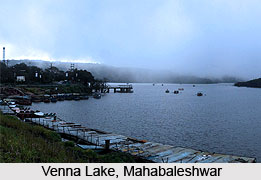 Mahabaleshwar is a spectacular hill station situated in the Western Ghats. Being laundered in the mighty ranges of Sahyadri, it has earned the name of "queen of the hill stations of Maharashtra". Experts say that it is in fact the largest hill station in Maharashtra`s Sahyadri range. It is an integral part of the district of Satara and lies almost one hundred fifteen kilometres to the south west of Pune.
Mahabaleshwar is a spectacular hill station situated in the Western Ghats. Being laundered in the mighty ranges of Sahyadri, it has earned the name of "queen of the hill stations of Maharashtra". Experts say that it is in fact the largest hill station in Maharashtra`s Sahyadri range. It is an integral part of the district of Satara and lies almost one hundred fifteen kilometres to the south west of Pune.
History of Mahabaleshwar
Mahabaleshwar is historically significant. Tracing back the findings of the historians it is said that Mahabaleshwar originated in the early years of 1215. However, it was the British rulers who built this place as a gorgeous "health resort". In the year 1828, the then Governor namely Sir John Malcolm had constructed a sanatorium here. Interestingly during the British period it was called the Malcolm Peth. It needs no mentioning that it got its name from the Governor.
Geography of Mahabaleshwar
Mahabaleshwar is positioned approximately at a height of 1372 metres or 4438 feet above the sea level. So far as the climatic conditions are concerned, due to high altitudes, Mahabaleshwar experiences cool climatic condition. It rains like cats and dogs from the months of June to September. Best season to visit the place is from March to May.
 Etymologically, the word Mahabaleshwar has been derived from the Lord Shiva, popularly known as Lord Mahabali. A `self-originated lingam`, in the shape of a `rudraksha` is placed at the temple of Gokarna. It was believed to be the most consecrated one among all the other 12 `jyothirlingams`.
Etymologically, the word Mahabaleshwar has been derived from the Lord Shiva, popularly known as Lord Mahabali. A `self-originated lingam`, in the shape of a `rudraksha` is placed at the temple of Gokarna. It was believed to be the most consecrated one among all the other 12 `jyothirlingams`.
 Demography of Mahabaleshwar
Demography of Mahabaleshwar
According to the census of India, the total population of Mahabaleshwar has been enumerated to be 12,736. Out of it, male populace constitutes 55 percent. In comparison, female population is less and thus constitutes 45 percent. In Mahabaleshwar children who fall into the age group of less than six years constitute 11 percent of the population. The average literacy rate of Mahabaleshwar constitutes 78 percent which is even higher than 59.5 percent, India`s average literacy rate. Male literacy rate constitutes 84 percent, while the rate of female literacy also is no less insignificant thereby constituting 71 percent.
Tourism in Mahabaleshwar
Mahabaleshwar has a plentiful of magnificent palaces having mesmerizing natural beauty. Lodwick Point has got its name from General Lodwick, who is believed to be the first person to go to the place as early as 1824. His son has raised a monument there in his fond memory. Lodwick Point rises to a height of near about 1,240 metres. Elphinstone Point got its name from the then Governor of Mumbai namely Sir Elphinstone. Dr. Murray first identified it in the beginning of eighteenth century. Arthur`s Seat is another significant point of Mahabaleshwar. To the tourists it offers a panoramic view of the Jor valley. Other points like Marjorie Point, Savitri Point and Castle Rock Point are worth mentioning. They rise from Konkan valleys and are situated en route to Arthur`s Sea.
 No trip becomes complete without visiting the famous Lingmala Waterfall of Mahabaleshwar. It runs through the Venna valley. Panchgani is another hill resort, which lies at a little distance from Mahabaleshwar. One could enjoy the fun of viewing various points like Sidney Point, Parsi Point and Graves Point here. Several strawberry farms are also located in Panchgani. Going to those farms and buying fresh fruit and jams also are added attractions. In the close proximity one finds Lord Hanuman Mandir which is also worth visiting. This temple also houses the "Samadhi of the famous sage Sant Rama Dassa" of the 16th century. Other temples like Sri Rama Temple and Mahabal Temple are also some of the significant places of interest of Mahabaleshwar.
No trip becomes complete without visiting the famous Lingmala Waterfall of Mahabaleshwar. It runs through the Venna valley. Panchgani is another hill resort, which lies at a little distance from Mahabaleshwar. One could enjoy the fun of viewing various points like Sidney Point, Parsi Point and Graves Point here. Several strawberry farms are also located in Panchgani. Going to those farms and buying fresh fruit and jams also are added attractions. In the close proximity one finds Lord Hanuman Mandir which is also worth visiting. This temple also houses the "Samadhi of the famous sage Sant Rama Dassa" of the 16th century. Other temples like Sri Rama Temple and Mahabal Temple are also some of the significant places of interest of Mahabaleshwar.



















